David's Astronomy Pages
Notes - Session 1018 (2022-06-06)
Notes
(S1017)
Notes
Main
Home
Page
Notes
(S1019)
David's Astronomy Pages
|
Notes (S1017) |
Notes Main |
Home Page |
Notes (S1019) |
Main aims
Equipment & Software
Highlights
Summary Plots & Logs
| Observing Plan | ||||||||||||||||||||||||||||||||||||||||||||||||||||||||||||||||||||||||||||||||||||||||||||||||||||||||||||||||||||||||||||||||||||||||||||||||||||||||||||||||||||||||||||||||||||||||||||||||||||||||||||||||||||
 |
||||||||||||||||||||||||||||||||||||||||||||||||||||||||||||||||||||||||||||||||||||||||||||||||||||||||||||||||||||||||||||||||||||||||||||||||||||||||||||||||||||||||||||||||||||||||||||||||||||||||||||||||||||
|
Observing Result |
||||||||||||||||||||||||||||||||||||||||||||||||||||||||||||||||||||||||||||||||||||||||||||||||||||||||||||||||||||||||||||||||||||||||||||||||||||||||||||||||||||||||||||||||||||||||||||||||||||||||||||||||||||
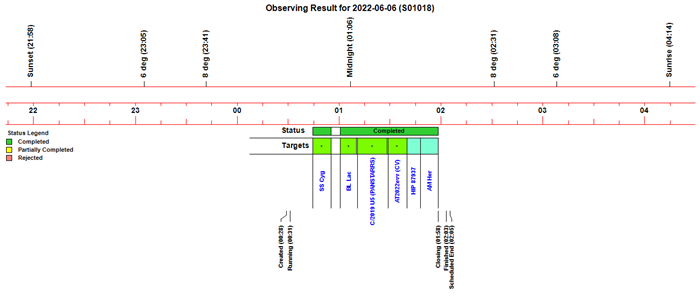 |
||||||||||||||||||||||||||||||||||||||||||||||||||||||||||||||||||||||||||||||||||||||||||||||||||||||||||||||||||||||||||||||||||||||||||||||||||||||||||||||||||||||||||||||||||||||||||||||||||||||||||||||||||||
| Dome & Scope Slewing Performance | ||||||||||||||||||||||||||||||||||||||||||||||||||||||||||||||||||||||||||||||||||||||||||||||||||||||||||||||||||||||||||||||||||||||||||||||||||||||||||||||||||||||||||||||||||||||||||||||||||||||||||||||||||||
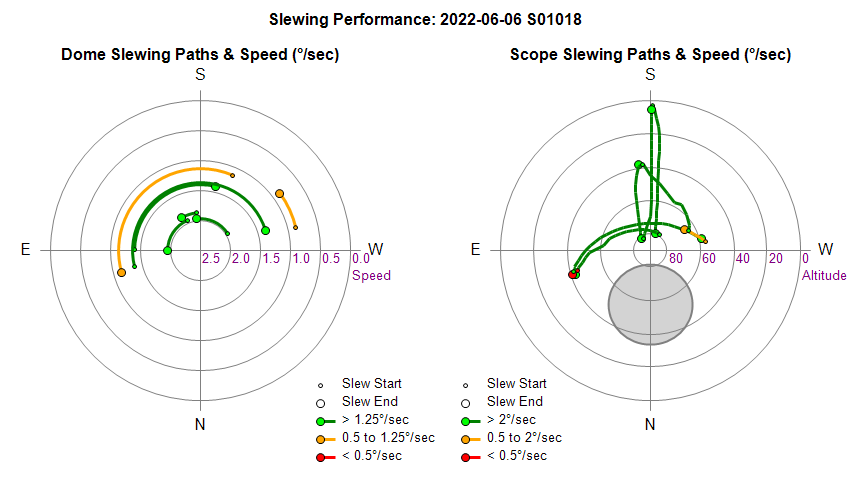 |
||||||||||||||||||||||||||||||||||||||||||||||||||||||||||||||||||||||||||||||||||||||||||||||||||||||||||||||||||||||||||||||||||||||||||||||||||||||||||||||||||||||||||||||||||||||||||||||||||||||||||||||||||||
| Slew/Centering Performance | ||||||||||||||||||||||||||||||||||||||||||||||||||||||||||||||||||||||||||||||||||||||||||||||||||||||||||||||||||||||||||||||||||||||||||||||||||||||||||||||||||||||||||||||||||||||||||||||||||||||||||||||||||||
 |
||||||||||||||||||||||||||||||||||||||||||||||||||||||||||||||||||||||||||||||||||||||||||||||||||||||||||||||||||||||||||||||||||||||||||||||||||||||||||||||||||||||||||||||||||||||||||||||||||||||||||||||||||||
| Guiding Performance | ||||||||||||||||||||||||||||||||||||||||||||||||||||||||||||||||||||||||||||||||||||||||||||||||||||||||||||||||||||||||||||||||||||||||||||||||||||||||||||||||||||||||||||||||||||||||||||||||||||||||||||||||||||
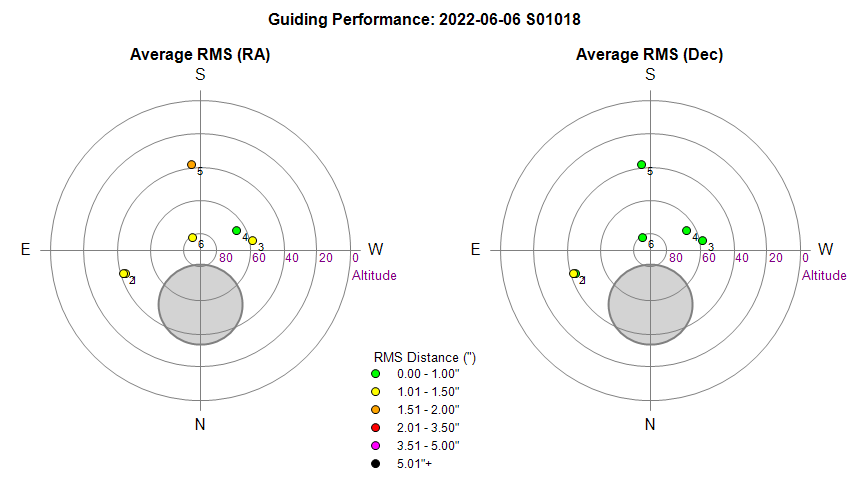 |
||||||||||||||||||||||||||||||||||||||||||||||||||||||||||||||||||||||||||||||||||||||||||||||||||||||||||||||||||||||||||||||||||||||||||||||||||||||||||||||||||||||||||||||||||||||||||||||||||||||||||||||||||||
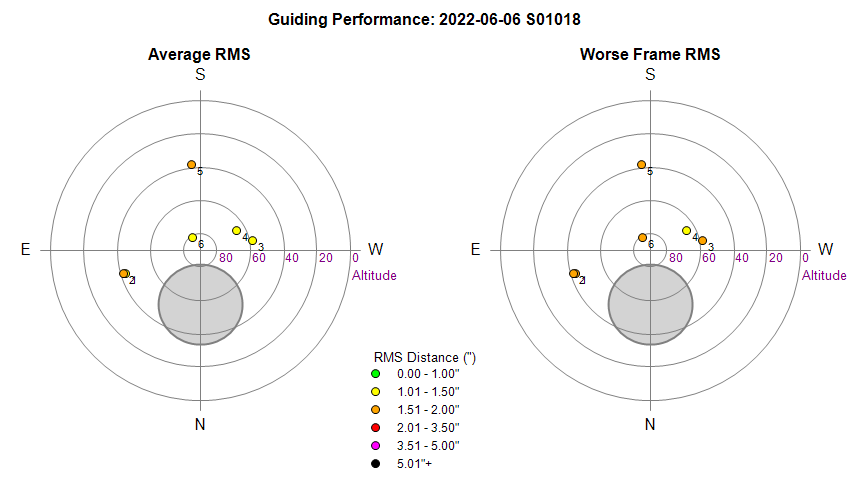 |
||||||||||||||||||||||||||||||||||||||||||||||||||||||||||||||||||||||||||||||||||||||||||||||||||||||||||||||||||||||||||||||||||||||||||||||||||||||||||||||||||||||||||||||||||||||||||||||||||||||||||||||||||||
| Sky Conditions (Locate Frames) | ||||||||||||||||||||||||||||||||||||||||||||||||||||||||||||||||||||||||||||||||||||||||||||||||||||||||||||||||||||||||||||||||||||||||||||||||||||||||||||||||||||||||||||||||||||||||||||||||||||||||||||||||||||
 |
||||||||||||||||||||||||||||||||||||||||||||||||||||||||||||||||||||||||||||||||||||||||||||||||||||||||||||||||||||||||||||||||||||||||||||||||||||||||||||||||||||||||||||||||||||||||||||||||||||||||||||||||||||
|
Night Sky Summary Plot Top axis: Sky Brightness at Zenith (in ADU/s) Lefthand axis: Local Time (hh LT). Righthand axis: Sun Altitude (degs) |
||||||||||||||||||||||||||||||||||||||||||||||||||||||||||||||||||||||||||||||||||||||||||||||||||||||||||||||||||||||||||||||||||||||||||||||||||||||||||||||||||||||||||||||||||||||||||||||||||||||||||||||||||||
 |
||||||||||||||||||||||||||||||||||||||||||||||||||||||||||||||||||||||||||||||||||||||||||||||||||||||||||||||||||||||||||||||||||||||||||||||||||||||||||||||||||||||||||||||||||||||||||||||||||||||||||||||||||||
|
Actual Weather vs Pre-Session Weather Forecast |
||||||||||||||||||||||||||||||||||||||||||||||||||||||||||||||||||||||||||||||||||||||||||||||||||||||||||||||||||||||||||||||||||||||||||||||||||||||||||||||||||||||||||||||||||||||||||||||||||||||||||||||||||||
 |
||||||||||||||||||||||||||||||||||||||||||||||||||||||||||||||||||||||||||||||||||||||||||||||||||||||||||||||||||||||||||||||||||||||||||||||||||||||||||||||||||||||||||||||||||||||||||||||||||||||||||||||||||||
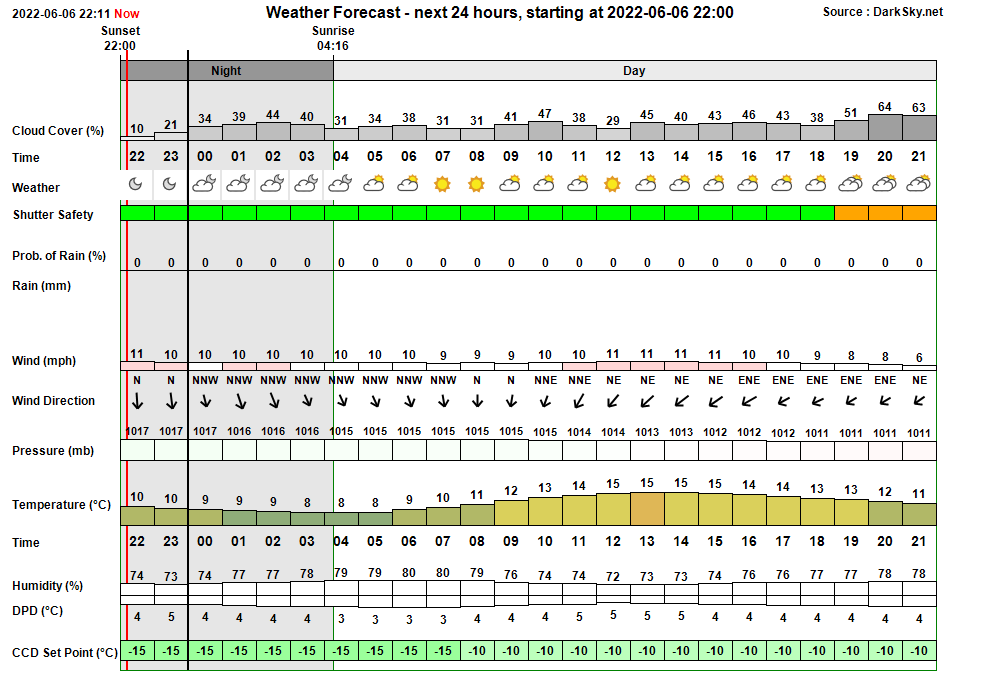 |
||||||||||||||||||||||||||||||||||||||||||||||||||||||||||||||||||||||||||||||||||||||||||||||||||||||||||||||||||||||||||||||||||||||||||||||||||||||||||||||||||||||||||||||||||||||||||||||||||||||||||||||||||||
| Session Event Log | ||||||||||||||||||||||||||||||||||||||||||||||||||||||||||||||||||||||||||||||||||||||||||||||||||||||||||||||||||||||||||||||||||||||||||||||||||||||||||||||||||||||||||||||||||||||||||||||||||||||||||||||||||||
|
||||||||||||||||||||||||||||||||||||||||||||||||||||||||||||||||||||||||||||||||||||||||||||||||||||||||||||||||||||||||||||||||||||||||||||||||||||||||||||||||||||||||||||||||||||||||||||||||||||||||||||||||||||
| Session Alerts | ||||||||||||||||||||||||||||||||||||||||||||||||||||||||||||||||||||||||||||||||||||||||||||||||||||||||||||||||||||||||||||||||||||||||||||||||||||||||||||||||||||||||||||||||||||||||||||||||||||||||||||||||||||
|
||||||||||||||||||||||||||||||||||||||||||||||||||||||||||||||||||||||||||||||||||||||||||||||||||||||||||||||||||||||||||||||||||||||||||||||||||||||||||||||||||||||||||||||||||||||||||||||||||||||||||||||||||||
Back to Top
12:16:59.697 CommandString Exception System.TimeoutException:
The operation has timed out.[0D][0A] at
ASCOM.Pulsar_Observatories_Dome.Dome.CommandString(String command, Boolean
raw)
12:16:59.697 Volatile Exception System.TimeoutException: The
operation has timed out.[0D][0A] at
ASCOM.Pulsar_Observatories_Dome.Dome.CommandString(String command, Boolean
raw)[0D][0A] at ASCOM.Pulsar_Observatories_Dome.Dome.Volatile()Back to Top
Issue
Problem starting Night Services -
Obs.Monitor became frozen in section Focuser1 (00:15), causing problems
connecting Telescope and PHD2 services
Description
Whilst starting night services manually, Telescope
Power service failed (with message 'Telescope Power is Off' and Telescope
Connection didn't proceed. After the Start Services operation finished
the Obs.Overseer then reported "Obs.Monitor is frozen (00:15) in section
Focuser1".
UPB Software Interface indicates that LX200 Power was on which was in
contradiction to the 'Start Night Services' message that 'telelscope power
is off'
Thinking that there might be a problem with
ASCOM.pegasus_upb.Switch, despite absence of any reported errors, all
services were stopped at 00:19:26, and AstroMain and other observatory
software were closed down / stopped.
After restarting observatory
software including AstroMain a fresh attempt to start Night Services was
made. This time there were no anomalies or errors and the S1018 session was
then successfully started and executed with further problem.
There are three main questions to be addressed
1) Why did
Scope.PowerOn() routine return a failure, when the operation to turn on
scope power did actually succeed ?
2) Why did PHD2 failed to connect to
camera/mount devices
3) Why did Obs.Monitor become frozen ?
Analysis
Scope.PowerOn 'failure' ?
Log files
ahead of the event are completely normal with no exceptions or anomalies.
AstroMain 3.51.15 was restarted at 14:04 and daytime services started with
no problem. A saved ObsPic shows the Telescope Power being off at
00:14:48 which is a few seconds prior to user action to start night services
at 00:15:00. The message "Telescope Power has been switched
on" at 00:15:04.74 suggests that the call to Scope.PowerOn was
successful A remote connection view of the UPB Software Interface made at
around 00:20 indicated that the LX200 Power had been succcessfully turned
(the next saved ObsPic confirms the scope power was already on at 00:25:22)
.
It can be concluded that there was no problem with UPB Power Box or
with 'ASCOM.pegasus_upb.Switch' driver & connection going into the connect
night services operation.
So why did the Scope.PowerOn routine report
that it had failed and produce the message 'Telescope Power is Off'.
At the time it was thought that the issue was related to a problem with
ASCOM Switch connection but no errors or exceptions were recorded for the
ASCOM.pegasus_upb.Switch and turning on LX200 Power (which uses the ASCOM
Switch) evidently occurred ok.
At 00:15:19.34 there was an Exception in PHD2.GetCalibrationData,
handling 'calibrated' "Conversion from string "Error: device not
connected" to type 'Boolean' is not valid" and Connect PHD2
routine reported that it was unable to connect to either Camera or Mount.
These problems are most likely related to fact that Telescope hadn't been
connected to or more specifically the LX200 telescope hadn't finished
initialising when PHD2 made a connection attempt, since attempt was made
only 15s after scope was powered on, when normally 60s are allowed for
before making a connection.
Log file
00:15:00.61 | User Action Select NightServices
Info | User action to select Night Services
00:15:02.85 | User
Action Start Services
Info | User request to start observatory services
00:15:02.85 |
ObsServices Start Services
Try | Starting Observatory Services
Report:
Start Observatory Services
2022-06-07 00:15 (Local)
00:15:02.88 | ObsServices Check Scope.Power
Info | Checking Telescope Power State (0)
00:15:02.88 | ObsServices
WaitOn User
Ok | Confirm with user whether to Switch Scope Power On
00:15:04.74 | ObsServices Set Scope.PowerOn
Ok | Telescope Power has been switched on
Report: Telescope Power:
Fail Telescope Power is off
Report:
Telescope: (COM6)
Fail
00:15:14.78 | Observatory Services Start PHD2 Listen Ok
| Starting PHD2 Listening Loop
Report:
PHD2 Client
Ok Started (00:15) (TCP/IP Port 4400,
LocalHost)
Report: PHD2 Profile
Ok Started already (Profile:TS80/178MC, ID: 1)
Report: - PHD2 Camera
Fail(0) Unable to connect (Camera: ZWO ASI178MC)
Report:
- PHD2 Mount
Fail(0) Unable to connect (Mount: DeviceHub -> Meade Generic (ASCOM))
00:15:15.90 | Observatory Overseer Check ObsMonitor Alert |
Obs.Monitor is Frozen (15s) in section : Monitor Focuser1
00:15:19.34 |
ObsServices Get PHD2.CalibrationData Fail |
Exception in PHD2.GetCalibrationData, handling 'calibrated'
00:15:19.34 |
ObsServices Get PHD2.CalibrationData Fail |
Conversion from string "Error: device not connected" to type 'Boolean' is
not valid.
Code
The
Scope.Connect() routine calls Scope.SetPowerOn_Quiet() routine to turn
telescope power on (after calling objPowerBox.SetSwitch(cSwitchPower1,
True) the writing of "Telescope Power has been switched on" proves that no
exception occurred, again confirming that UPB powerbox and
ASCOM.pegasus_upb.Switch were working ok at the time)
The Scope.Connect()
routine then waits up to 10s for Scope.PowerState to become 1 (On).
If Scope.PowerState = 0 after 10s the routine reports the job as a "Fail"
& gives the message "Telescope Power is off".
Whilst
Scope.SetPowerOn() method (called manually using the 'Switch On Scope'
button routine) sets Scope.PowerState = 1 (and also VM.ScopePowerState = 2,
VM.ScopePowerSeconds = "0s" ) after calling
objPowerBox.SetSwitch(cSwitchPower1, True), the
Scope.SetPowerOn_Quiet() method called by Scope.Connect() doesn't set
Scope.PowerState but relies on the Obs.Monitor ("Monitor PowerBox" section)
to set Scope.PowerState property after reading the value of
objPowerBox.GetSwitch(cSwitchPower1). The Scope.SetPowerOn_Quiet()
method may have to do it this way as it runs from the 'ObsServicesThread'
thread and may have had a historic problem in calling objPowerBox object
directly as it was created on the main UI thread ?
It is conjectured
that Obs.Monitor didn't set Scope.PowerState = 1 because it was frozen in
the "Monitor Focuser1" section and was not actively cycling around to the
"Monitor PowerBox" section.
Frozen Obs.Monitor ?
At 00:15:05.90 the Observatory Overseer checked the status of ObsMonitor and
found "Obs.Monitor is Pending (5s) in section : Monitor Focuser1",
subsequently confirmed to be "Frozen (10s, 15s etc) in section : Monitor
Focuser1". It would seem that Obs.Monitor froze at around
00:15:00 to 00:15:02.
It is highly likely that frozen Obs.Monitor
prevented the setting of Scope.PowerState = 1 (in "Monitor PowerBox"
section) and led to Connect Telescope and Connect PHD2 services failing.
Problems with the Obs.Monitor freezing in the section "Focuser1" have
been seen before, but haven't been fully understood.
[ The ObsMonitor cycle immeditely prior to the ObsMonitor freeze was logged at 00:14:58.84. During this cycle the Focuser1 section of code took 627ms to execute which is not an atypical duration. The section varies from around 14 to 650ms (dependant on whether is executes in a single go or if the ObsMonitor thread is suspended in order to execute other program threads or other applications ]
So what caused Obs.Monitor to freeze in the section "Monitor Focuser1" ?
The "Monitor Focuser1" code section contain multiple references to
objFocuser1 object. These comprise
- objFocuser1.Connected (direct call)
- objFocuser1.Temperature (called via Focuser1.PreciseTemperature),
-
objFocuser1.Position (called via Focuser1.Position)
-
objFocuser1.IsMoving (called via Focuser1.IsMoving)
If there is a
problem with the TCF Focuser/Driver it is conjectured that any of these
calls might lead to execution hanging.
The "Calc Foc1 AvTemp" code
section does contain any code that would be likely to cause execution to
hang
The "Update Foc1 Fields" code section calls 'UpdateFoc1Fields' which
contains several references to Camera and objFocuser1 objects
-
Camera.FilterIndexZeroBased (direct call)
-
Camera.FilterIndexZeroBased (called via
Focuser1.GetTempCompPositionForFilter() )
- objFocuser1.Temperature
(called via Focuser1.GetTempCompPositionForFilter() /
Focuser1.Temperature
If there is a problem with the TCF Focuser/Driver or CCDSoft.Camera it is
conjectured that any of these calls might lead to execution hanging.
At the time that ObsMonitor froze CCDSoft.Camera was connected and working
ok at around 00:14. User request to connect CCD Camera was made at
00:14:53.51. Report file shows successful connection and successful access
to Camera properties (CCD temperature etc)
Changes in AstroMain 3.51.16
Besides the main "Monitor Focuser1"
code the section also includes extra code to i) calculate a Rolling Average
Focuser Temperature and ii) Update Foc1 Fields in the ObsConsole window . In
order to distinguish where the Obs.Monitor is freezing these 2 intervals of
extra code are defined as two separate code sections in
AstroMain 3.51.16 named "Calc Foc1 AvTemp" and "Update Foc1 Fields"
respectively.
Beginning around 40-45s after the ObsMonitor froze the
Logfile shows 'DewHeater' cycles failing with the message "Tube
Temperature is vcNull", repeated every 60s thereafter.
Conclusion
It is unclear exactly why Obs.Monitor
frooze.
Actions
![]() Extra Tracing. Add extra named sections to Obs.Monitor so that
freezes in core part of "Monitor Focuser1" section can be definively
distinguished from freezes in two newly defined "Calc Foc1 AvTemp" and
"Update Foc1 Fields" sections (that were previously included in "Monitor
Focuser1".
Extra Tracing. Add extra named sections to Obs.Monitor so that
freezes in core part of "Monitor Focuser1" section can be definively
distinguished from freezes in two newly defined "Calc Foc1 AvTemp" and
"Update Foc1 Fields" sections (that were previously included in "Monitor
Focuser1".
![]() PHD2. Prevent PHD2 Service from starting if Scope.PowerState isn't
1.
PHD2. Prevent PHD2 Service from starting if Scope.PowerState isn't
1.
![]() TCF-S restart. In the event that ObsOverseer detects that
ObsMonitor is frozen in section "Monitor Focuser1", it may be worth
attempting to "Restart TCF-S Service".
TCF-S restart. In the event that ObsOverseer detects that
ObsMonitor is frozen in section "Monitor Focuser1", it may be worth
attempting to "Restart TCF-S Service".
Back to Top
Issue
Anomalous slew case identified by the
slew monitor (01:40:04).
Q. Does the issue shed any
light upon the likely origin of the SS Cyg slew anomaly in session S1014
2022-05-31 (more)
?
Description
Recently improved slew monitoring routine picked up
and issued an Dome Slew Anomaly alert (Dome slew resumed at Az
236.2°) at 01:40:04 whilst performing a slew to Target 5/6 (HIP 87937,
alias Barnards Star).
Analysis
The timeline associated with this particular
slew based on combining multiple logs is as follows:
01:39:55.653: DH Dome performs position recalculation due to
periodic timer expiration.
(calculated dome position is Az: 238.11)
(dome azimuth is close to the target azimuth...no slew is needed)
01:40:03.700: DH sends Slewing=False to AstroMain Dome client
01:40:03.77 AstroMain requests Telescope to slew to Target
5/6 (HIP 87937) This is time T0.
(Scope at Az: 242.5°, Scope needs to move to Az 172.2°.
Dome at Az 237.3°, Dome needs to move to Az 172.4°)
01:40:03.796:
DH Dome begins fast polling every 1000 ms, performs a Dome position
recalculation due
to telescope slew-in-progress and calculates a destination Az (172.39)
01:40:03.821: Pulsar Dome receives SlewToAzimuth (172.393863)
01:40:03.835: DH Dome reports SlewToAzimuth (172.39386°):
01:40:03.796: MeadeGeneric recieves SlewToCoordinatesAsync
(Ra=17.9808749512575, Dec=5.30341351083939)
01:40:04.082: DH
Telescope reports SlewToCoordinatesAsync (Ra ***, Dec ***)
01:40:04.123: DH Dome reports SlewToAzimuth (172.39431°)
(further SlewToAzimuth commands every 50ms not shown)
01:40:04.299
DH sends Slewing=True to AstroMain Dome client
01:40:04.29:
AstroMain sees Dome Slewing=True (T+0.5s)
01:40:04.50: AstroMain sees Dome Slewing=False
(T+0.7s, dome slew appears to have stopped)
01:40:04.666: Pulsar
Dome reports Slewing=False
01:40:04.715: DH sends Slewing=False to
AstroMain Dome client
01:40:04.933: DH sends Slewing=True to AstroMain Dome client
01:40:04.95: AstroMain sees Dome Slewing=True
(T+1.2s, dome slew appears to have started again)
01:40:04.731: DH Dome sends SlewToAzimuth (172.39824°):
01:40:04.731: Pulsar Dome reports Slewing=True (Dome is moving
!)
01:40:05.234: MeadeGeneric reports IsSlewing =
True(Telescope is moving !)
01:40:05.922: DH Telescope starts fast
polling every 550 ms.
01:40:30.317: DH Telescope returns to
normal polling every 3000 ms.
01:40:36.781: Pulsar Dome reports Slewing=False
01:40:36.782: DH Dome returns to normal polling every 5000 ms.
01:40:36.875 DH sends Slewing=False to AstroMain Dome client
01:40:36.89 AstroMain recognises that the Slew is Complete
01:40:46.775: DH Dome performs position recalculation due to
periodic timer expiration
(calculated dome position is Az: 172.59)
(dome azimuth is close to the target azimuth...no slew is needed).
From the view of AstroMain's slew monitor its sees Dome Slewing = True
(at T+0.5s), before it goes to Slewing = False (at T+0.7s), before going to
Slewing=True again (at T+1.2s) and stays in this state until finally
Slewing=False at T+33s.DomePath Info | Time: 0.5, Slewing: 1,
Slew: 0.0, Az: 237.3
DomePath Info | Time: 0.7, Slewing: 0, Slew: 0.0,
Az: 237.3
DomePath Info | Time: 1.2, Slewing: 1, Slew: 1.1, Az: 236.2
DomePath Info | Time: 2.0, Slewing: 1, Slew: 2.7, Az: 234.6
DomePath Info
| Time: 3.1, Slewing: 1, Slew: 4.6, Az: 232.7
DomePath Info | Time: 4.1,
Slewing: 1, Slew: 6.7, Az: 230.6
DomePath Info | Time: etc
AstroMain's slew monitor recieves the dome slewing state that
DeviceHub.Dome gives it. This isn't necessarily the same slewing state that
the Pulsar Dome has at any one time. In this particular case whilst the slew
monitor percieves the dome slewing stopping and then resuming again at an
interim moment around 0.7s into the slew operation (which caused the alert
to be raised), the Pulsar Dome log clearly records just a single slew
event (i.e. it doesn't have any intermediate slew stop & resume).
What actually happens is that immediately after the slew is
commanded (by Dome Manager performing a 'dome position recalculation due to
telescope slew-in-progress'), DH begins to return dome Slewing=True to the
attached clients, which it continues to do up until the moment that it next
polls the dome which will typically still have Slewing=False (as the Pulsar
dome has started moving yet). When the dome finally begins
moving (typically after 1s) fresh polling detects this and DH then starts
returning Slewing=True. This continues until Polling of the dome
identifies that slewing has stopped and DH finally returns Slewing=False.
This initial Slewing=True before switching back to Slewing=False is only
occasionally seen. It is likely to depend on where DH is in its polling
cycle compared to the precise moments that AstroMain requests the Slewing
property value from DH. For the slew to the target that proceded the
one to HIP 87937 the dome monitor recorded the following :
DomePath Info | Time: 0.5, Slewing: 0, Slew: 0.0, Az: 256.7
DomePath Info
| Time: 1.1, Slewing: 1, Slew: 1.4, Az: 255.3
DomePath Info | Time: 2.2,
Slewing: 1, Slew: 3.1, Az: 253.6
DomePath Info | Time: 3.1, Slewing: 1,
Slew: 5.1, Az: 251.6
DomePath Info | Time: 4.1, Slewing: 1, Slew: 6.8,
Az: 249.9
DomePath Info | Time: 5.2, Slewing: 1, Slew: 9.0, Az: 247.7
DomePath Info | Time: etc
Conclusion
The dome slewing anomaly in this
particular case is a false alert and is a completely explainable condition
that is caused by the way that DH initially returns Slewing=True as
soon as SlewToAzimuth is commanded whilst Pulsar Dome continues to return
Slewing = False until the dome actually starts moving some 1s later.
Whether a given slew creates an anomalous condition in AstroMain's slew
monitor depends on the precise timing of DH dome polling and the timing of
Slewing enquiries from AstroMain.
The particular situation that gave
rise to false alert in case of this slew to HIP 87937 can be recognised
because at the moment the Slewing flag temporariliy drops back to 0 (False),
the Slew Angle is 0.0, and the apparent resumption of slewing comes < 2s
after the slew operation commenced.
Unfortunately
the case doesn't shed any light on the earlier dome slew anomaly from SS Cyg
(S1014, 2022-05-31) which remains a mystery.
Actions
![]() Slew Monitor. AstroMain's Slew Monitor to be modified to
not recognise this particular situation as
an anomaly and therefore not to raise this an alert.
Slew Monitor. AstroMain's Slew Monitor to be modified to
not recognise this particular situation as
an anomaly and therefore not to raise this an alert.
Back to Top
DeviceHub was updated on Development & Observatory Computers today (2022-06-09)
from version 6.6.0.10 to new 6.6.0.11 version.
This new
version contains a fix for an issue with dome slewing interruption that may have
caused the anomalous slew seen in session S1014 (see
Issue Identifying End Of Dome Slew, 2022-05-31). The version also
fixes an activity log format error for Telescope.SlewToCoordinatesASync which
was noticed in session S1016 (2022-06-03) after the earlier installation of
prior version (6.6.0.10).
6.6.0.11 Release Notes
-
Added ability to restore expanded panels at startup
- Fixed issue with dome
slewing interruption
- Changed Activity Log to not show icon on the Taskbar
- Fixed Activity Log format error for SlewToCoordinatesAsync
Activity Log
After installation of the new version the
Activity Log Capacity value (which was reset to its standard default value
(125000) during installation ) was again increased ten-fold (1250000) by editing
the DeviceHub configuration file (C:\Program
Files (x86)\Common Files\ASCOM\DeviceHub\ASCOM.DeviceHub.exe.config)
as follows:
<setting name="ActivityLogCapacity"
serializeAs="String">
<value>1250000</value>
</setting>
Results
The first live observing session using DeviceHub
6.6.0.11 will be S1019 (date TBA).
>> Device Hub Releases :
https://github.com/ASCOMInitiative/ASCOMDeviceHub/releases
Back to Top
| This Web Page: | Notes - Session 1018 (2022-06-06) |
| Last Updated : | 2024-03-22 |
| Site Owner : | David Richards |
| Home Page : | David's Astronomy Web Site |